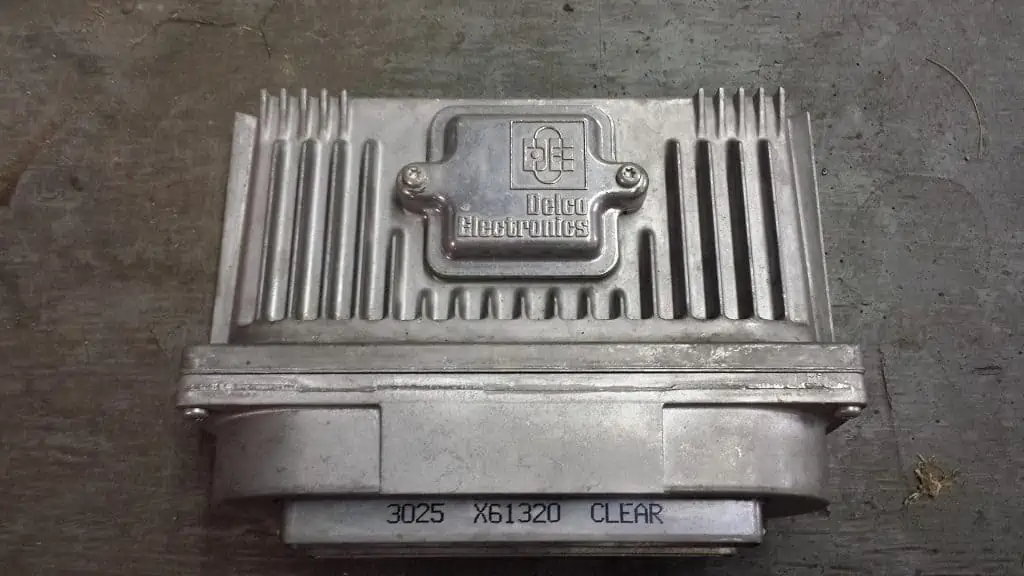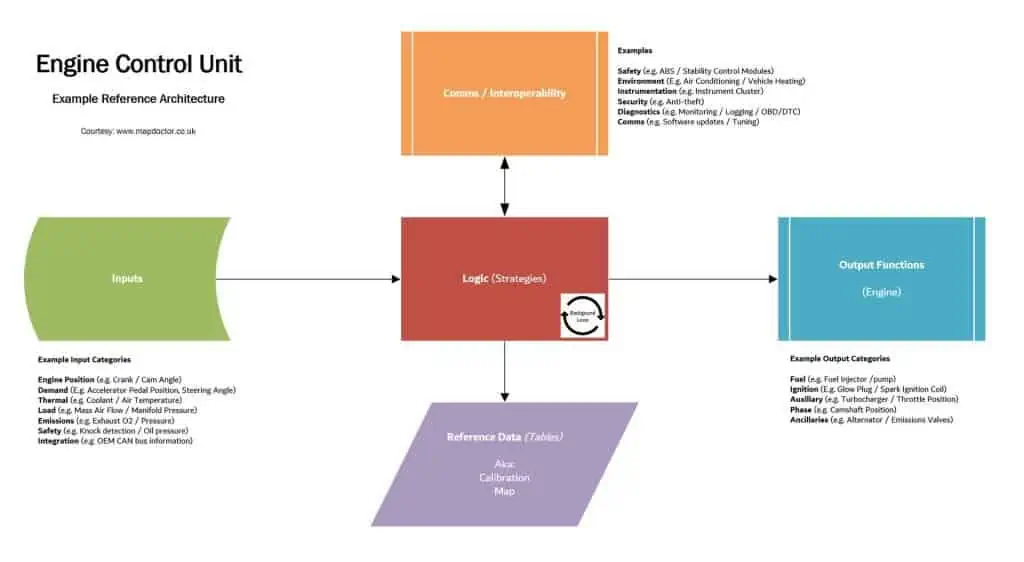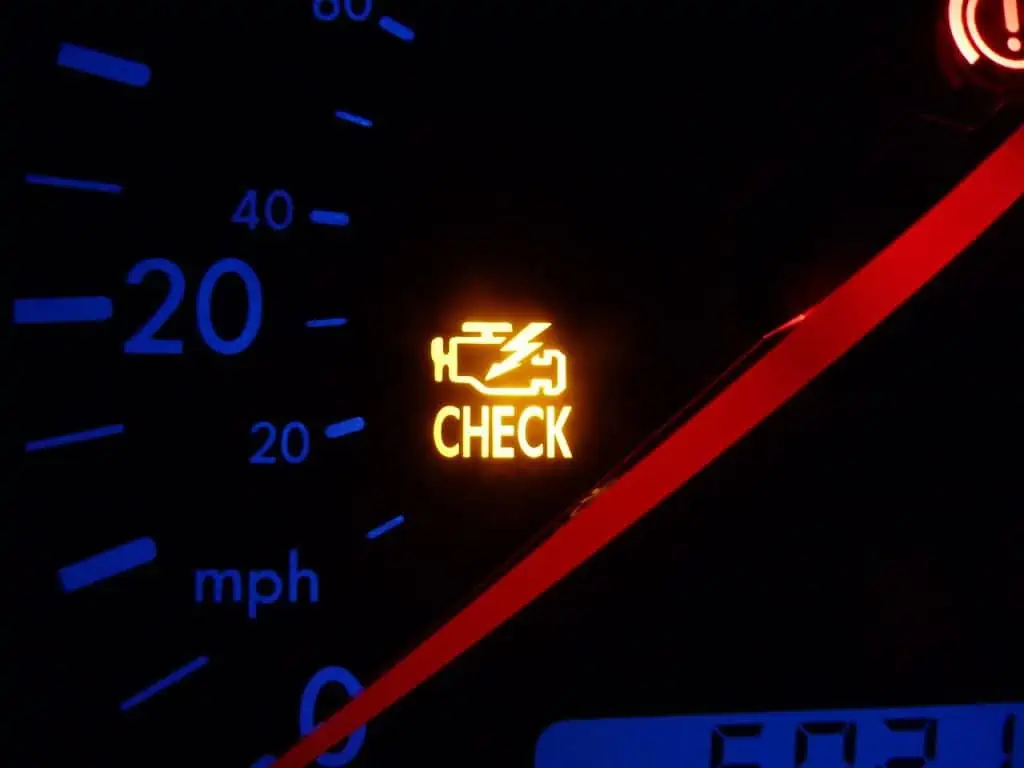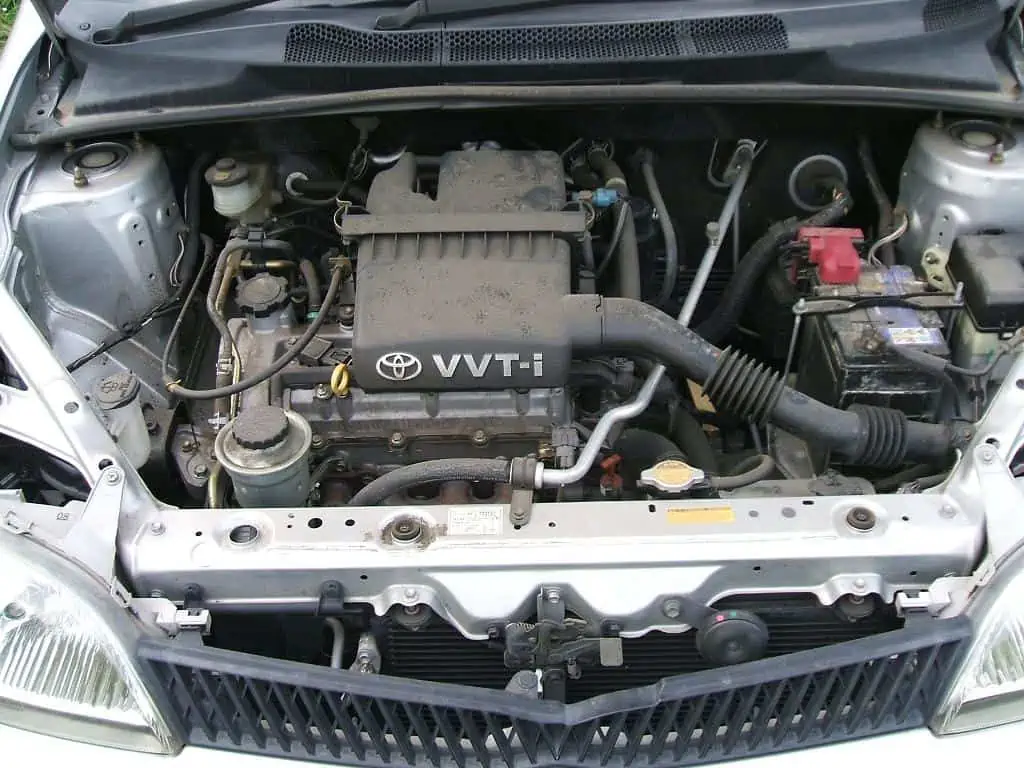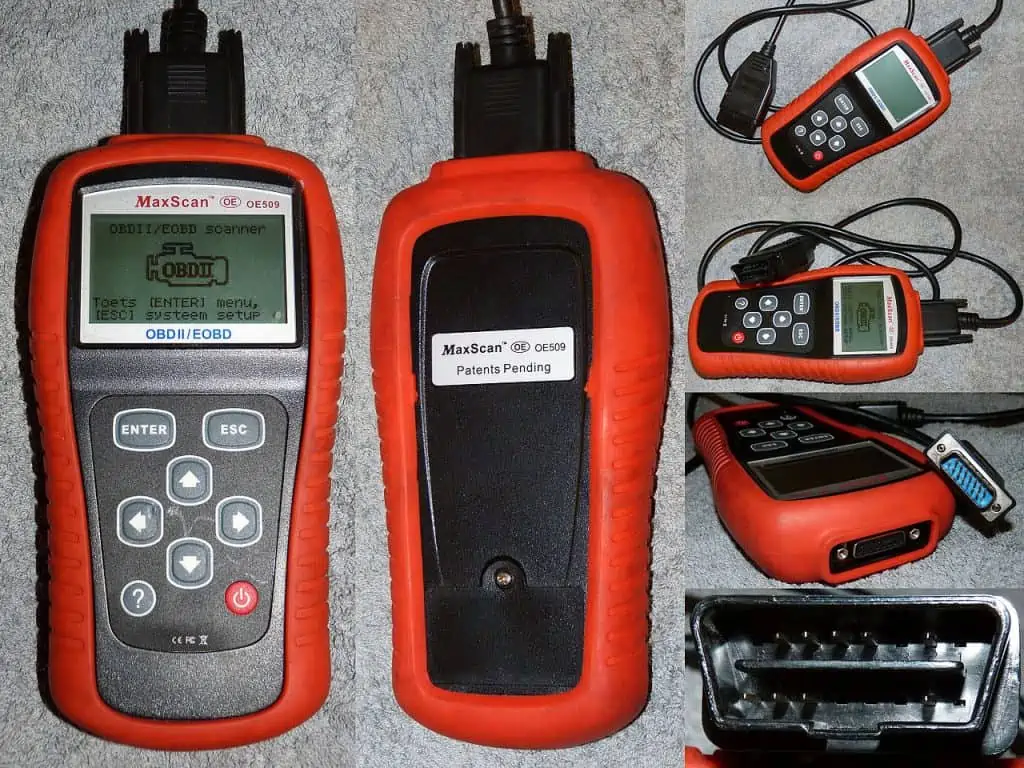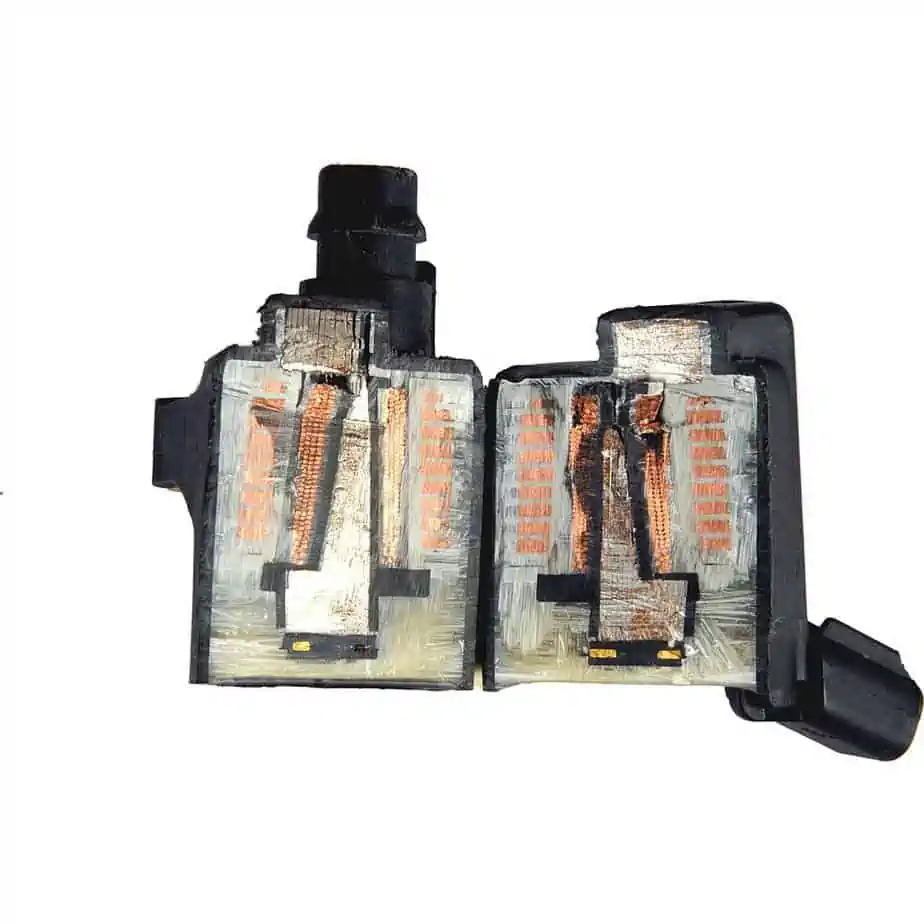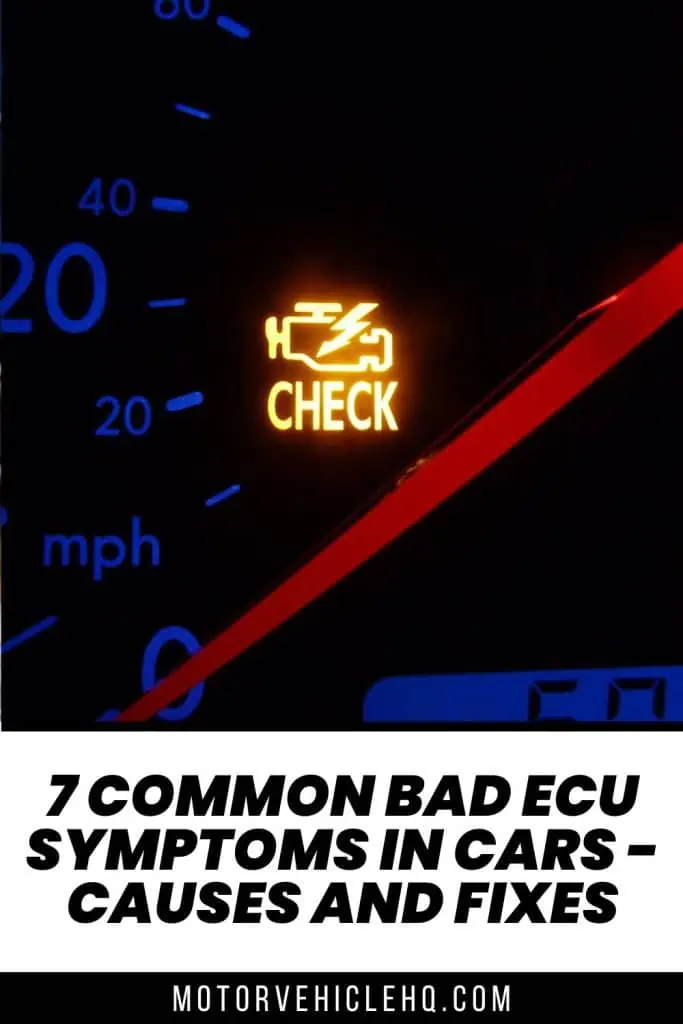This part of the car, also known as the engine control module (ECM) or engine control unit (ECU), is crucial to keeping it running. It plays a key role in the powertrain and engine, ensuring the smooth operation of the car.
Have you seen any strange behavior from your car lately? Discover bad ECU symptoms and how to resolve them.
A malfunctioning engine control unit might result in a wide range of undesirable symptoms. Today, we’ll go into great detail regarding bad ECU symptoms, including how to diagnose some of them, how to cure them, and how much a replacement will cost.
The ECU of a car controls several crucial processes, therefore if it begins to malfunction, your automobile’s performance will probably change. The car not starting, poor engine performance, engine misfiring or stalling, poor gas mileage, rough or irregular shifting, and check engine light lighting are the most typical signs of a malfunctioning ECU.
These bad ECU symptoms and how to test an ECU with a multimeter will be covered in this article. Knowing the aforementioned signs will help us identify what and where problems occur so that we can get them fixed as soon as possible.
But first, you must understand what an ECU is and how it works if you want to read bad ECU signals like a pro. So that you can quickly relate to the symptoms of an ECU malfunction, we’ll start by concentrating on the ECU and its purpose.
An ECU: What Is It?
An ECU, or electronic control unit, is a tiny gadget that fits inside an automobile’s body and controls particular car functions. The number of electronic control units (ECUs) in modern automobiles can reach 100 and in certain cases more.
The fundamentals (power steering and the engine), access and security (keyless entry and door locks), and comfort are all things that ECUs can handle (HVAC, power seats, and windows).
An engine control unit by Mgiardina09 / CC BY-SA 3.0. The ECU of a car regulates several key procedures, therefore if it starts to malfunction, the performance of your car will undoubtedly change.
You may add passive safety measures like airbags and active safety features like autonomous emergency braking to that extensive list.
Every ECU typically has a separate chip that runs the firmware or software and requires power and connections to the outside world to function. The ECU receives input from several parts of the car.
For instance, the input would be received by the door lock ECU when a passenger pressed the wireless key fob or the door unlock/lock button on a car door.
In contrast, collision sensors provide data to an airbag ECU. The ECU then instructs the actuators to respond to the inputs by sending them a signal. In our cases, an actuator that unlocks or locks the relevant door would be actuated. The airbag ECU would inflate an airbag.
Which Different Types of Automotive ECUs are Available?
Since vehicles have numerous ECUs, they are divided into groups according to the types of jobs they do. Some of them include:
1. The Engine Control Module
An ECM monitors the ignition timing and the amount of gasoline in the engine using its sensors. This makes a car more capable and efficient for you.
2. The Brake Control Module
The BCM controls when to apply and release the brakes in vehicles equipped with ABS and is responsible for preventing wheel skinning.
3. The Transmission Control Module
A Transmission Control Module, which is only present in automatic vehicles, analyzes your vehicle’s acceleration and engine acceleration to provide you with the smoothest shifts possible.
4. The Telematics Control Module
TCU maintains the functionality of a car’s onboard systems. Additionally, it manages the car’s satellite navigation system, phone, and Internet access.
5. The Suspension Control Module
Suspension control modules (SCM), which are found in vehicles with active suspension systems, regulate adjustments to the suspension and the appropriate ride height based on driving conditions.
Where Is the Engine Control Unit Located In a Car?
The ECU is frequently located on or near the engine. It may also be found in some vehicles under the dashboard or behind the glove box. The ECU cannot be installed in a specific location. The service handbook for your car has that information.
Which are the Common Bad ECU Symptoms In Cars?
Do not ignore these signs when you see them in your car! Either troubleshoot the ECU or seek advice from a qualified mechanic right now.
1. A Check Engine Light Comes On
A check engine light that illuminates the dashboard may be the simplest indicator that something is amiss with your ECU. There are undoubtedly a lot more reasons why the caution light would remain on.
ECU reference architecture by MapDoctorUK / CC BY-SA 4.0. Typically, each ECU has a unique chip that has the firmware or software and needs both power and connectivity to the outside world to operate.
However, the ECU quickly sends a signal to the CEL to illuminate when it discovers issues with the electronic circuits, components, and/or sensors.
This error can occasionally be made by the ECU as well. You must check the specific codes on the computer in your automobile to see whether your ECU is having trouble.
With these programs, you can solve any issue from the inside out. To learn more about issue codes, consult your owner’s manual, the manufacturer, or numerous internet resources.
2. Engine Stalls or Misfires
An engine misfiring or stalling is a significant symptom that quickly follows the appearance of a Check Engine Light. The sequence of stalls and misfires is likely to be random because there isn’t much consistency with these issues, making it more difficult to pinpoint an engine issue.
This frequently occurs because the engine control module malfunctions and starts giving the engine the wrong information. The performance of the engine will dramatically decline if the problem gets worse.
3. Gas Mileage Significantly Reduces
For a vehicle to operate at its best, the fuel-to-air ratio must be correct. The amount of gasoline that must be provided to the ignition chamber is not understood by a malfunctioning ECM. This could result in sending too much fuel to burn. Your car will begin to run rich and use far too much fuel.
4. Reduced Engine Performance
Alternatively, if the ECU is broken, too little fuel may be delivered to the combustion chamber. When you press the gas, you’ll notice that your car isn’t accelerating as quickly as it used to.
Additionally, it may shake and tremble, particularly when attempting to drive uphill, when the vehicle is loaded with cargo, or when something is being towed. In this situation, you might also detect a rough idle.
5. Difficulty Starting the Car
For the engine to start and run, the ECU’s computer must be in good working order. If your automobile won’t start, check the other components. Verify the battery connection, starter, and other relevant parts. Only examine the ECU if all other components are working properly.
You should get professional advice if you want to examine the ECU in your vehicle. We advise you to leave handling automobile computers to the experts if you lack the knowledge or experience necessary.
6. Decrease In Acceleration
As the ECU computer aids the TCM computer in properly controlling the car’s acceleration, there is a direct connection between the ECU and the transmission control module (TCM). So, if the ECU has failed, you will notice a decrease in acceleration.
Using the information acquired by the engine control module (ECM), the ECU modifies the throttle to ensure that the transmission shifts smoothly and readily. Therefore, it makes sense that there would be a considerable decrease in acceleration if the ECU were malfunctioning.
7. An Overheating ECU
The transistor, processors, or chips regularly generated heat for the ECU. But the ECU is susceptible to overheating, which is bad for its health. An overheated ECU has trouble controlling the car and causes problems.
A check engine light or malfunction indicator lamp by Wikiuser100000 / CC BY-SA 3.0. A prominent symptom that follows the presence of a Check Engine Light is an engine misfiring or stalling as a result of a defective ECU.
If the ECU in your engine frequently overheats, it will degrade more quickly. Examine the ECU’s heating temperature or level in your car.
How Can I Diagnose Bad ECU Symptoms In My Car?
Scanners and visual inspection are the least invasive ways to inspect ECM computers. A scanner can be used to determine the engine codes, which will provide a general explanation for why your car is acting strange.
There are a few additional techniques to examine the ECU of your car, such as testing the battery, performing a simple switch, and using the elimination approach. Even a multimeter can be used to test the ECU.
You can inspect the ECM computer by using the methods listed above. To make this easy to understand, we will cover a total of three techniques.
1. Utilize a Code Scanner for OBD or OBD-II
Even if they don’t have one, every automobile owner has to understand what an OBD scanner is. Data about the vehicle can be accessed using an Onboard Diagnostic (OBD) code scanner.
This device aids in inspecting the engine of the car and finding any potential problems. Although it’s not required, we strongly advise you to purchase an OBD scanner.
You need an OBD or OBD-II scanner tool for this first method of testing a car computer. The diagnostic component of your car must be connected to the OBD-II scanning equipment for you to communicate your vehicle’s issues.
To fix the issues, you must identify the codes that an OBD or OBD-II scanner shows.
These are a few of the typical codes linked to a malfunctioning ECU.
Code P0600
This code indicates that there is a problem with one of the sensors connected to the ECM. Alternatively, a wiring mistake can be the blame.
Code P0700
If you see this code, you should be aware that the TCM is malfunctioning. When a TCM malfunctions, it exhibits signs that are comparable to those of an erroneous ECM.
Code P0606
When there is a problem with your automobile’s PCM, this code is saved in your car. Many of the symptoms resemble those of an ECM, however, they are only loosely related.
2. Visual Examination
To test this component, you must visually inspect the ECM computer. PINs are the first item you will notice while starting a visual investigation.
You can proceed to the second stage, which involves giving your ECU a quick sniff test if you can see that the PINs are complete and sound. If the ECU smells like burned plastic, realize that something is wrong with it.
However, you might need to disassemble the ECU for a more thorough visual investigation. Don’t rush through this process and try to be cautious. You must inspect the car’s computer board for any damaged or corroded parts after disassembling it. You must replace them if there are any.
A typical car engine by Carolla / CC BY-SA 3.0. Engine performance suffers if the ECU is damaged. Fuel delivery to the combustion chamber might be insufficient. You’ll notice that your car isn’t accelerating as swiftly as it once did when you push the gas.
3. Examine the Battery
Your battery voltage will be able to inform you whether or not your ECU computer is working. If the battery voltage is off, the sensors connected to the ECU cannot make the proper adjustments. When you take a car for a drive, the battery must be fully charged.
Check the voltage of the automobile battery using a multimeter. Perform it twice: once with the engine running and once without. Your battery is completely charged and in good condition if the readings are 13.7 volts while the engine is running and 12.6 volts when it is not.
The battery has to be recharged if the reading is under 12.6 volts when the engine is off and under or over 13.7 volts when the engine is running. After that, make sure you test it once again with a multimeter.
How Much Does It Cost to Fix Bad ECU Symptoms?
Repairing bad ECU symptoms could be more expensive than many other auto repairs you would need to have done. The price of repairs is heavily influenced by several variables. Your need for an ECU repair is influenced by:
- Your vehicle’s make, model, and year
- The place where you reside
- The technician you select
- The fix strategy you choose
Without a doubt, you’ve observed in previous auto repairs that two mechanics on separate sides of town may charge radically different prices for an identical repair. It’s wise to phone around and acquire estimates in advance, just like with any repairs.
The price to replace your engine control unit will often range from $1,000 to $3,000. However, if you’re purchasing a brand-new ECU, that is the price of the entire unit. You should be aware that a complete ECU replacement is not always necessary.
In many instances, it can even be reprogrammed, which will cost you far less money overall. It’s advisable to repair the existing ECU to bring it back to a functional condition if you don’t require a new part.
The cost of an ECU diagnostic from a mechanic will generally range from $100 to $300. That will enable you to discover exactly what is wrong with it, and your mechanic will then be able to determine how to fix it.
You should budget between $300 and $800 if your ECU only requires reprogramming rather than a total repair. That’s a really wide range, as you can see.
Regrettably, a lot depends on the brand and model of your car. When it comes to the long-term expense of repairing or replacing an engine control unit, more exotic automobiles are probably more expensive.
1. Web-Based Repair
There is an additional remedy for fixing your engine control unit that might be suitable for you. These days, several companies fix engine control units online.
You must physically ship the hardware to them for them to be able to repair it and return it to you after a few days.
An automotive battery by Wtshymanski. The battery voltage will be able to tell you if the ECU computer is operating properly. The sensors linked to the ECU are unable to make the necessary modifications if the battery voltage is incorrect.
The cost savings compared to taking it to your mechanic generally outweigh the extra time required here. If you’re prepared to wait a few days to receive it back, you might be able to reduce the bill in half in some circumstances.
Of course, you’ll need to feel comfortable pulling out the part yourself or having a mechanic do it for you at an additional expense.
Always check an establishment’s web reviews before making a decision. Make sure the company is reliable.
2. Auctions-Based Repairs
If you’re interested, you may also use the alternative form of online repairs. You can look for the make and model of the engine control unit on eBay. An organization that offers a repair and return service will probably provide results for you.
You placed a bid on the auction and stated that you would like it repaired and returned to you. In many instances, this is even more affordable than my online repair services. This may allow you to repair your engine control unit for less than $100. A few manufacturers and models will have auctions that start at less than $50.
If you decide to use an auction repair service, make sure to first review their feedback. You should exercise extra caution when dealing with people online, just as you should research any local mechanic’s reputation before doing business with them.
Considering that you can’t visit the store or meet the people performing the repairs. You must rely on their ratings in the feedback. Fortunately, eBay is fairly trustworthy in this regard.
You should feel confident placing a bid on the auction as long as the company has a sizable amount of positive evaluations. But use your best judgment.
You should also be informed that there is an additional shipping fee when participating in an online auction. Consider including shipping charges in the final pricing because they can occasionally be more expensive than you anticipate. It is frequently still significantly more affordable than going to a nearby mechanic.
Your main worry with an eBay auction is probably timing. Make sure the auction specifies in detail how long it will take to receive your heart back. Additionally, you must be conscious of how rapidly you can get it to them initially.
What Elements Affect the Cost of Fixing Bad ECU Symptoms?
Many businesses include the diagnostic fee in the final cost, but this can vary from shop to shop.
A powertrain control module is an ECU that regulates the engine and transmission and may be covered by a warranty. Speak with the warranty provider or the car dealership where you purchased the vehicle.
Although replacing the ECU yourself can result in little cost savings, most of the cost is still incurred by the parts themselves.
The ECU may occasionally be reprogrammed or reconfigured. If that applies to you, you’re in luck because you simply have to pay for labor and not an entirely new ECU. If you have an OBD-II scanner, you can make the diagnosis on your own.
Repair costs for compact cars are low. Repairing cars with sophisticated technological systems will cost more. While the cost of a used ECU may intrigue you, it is not a wise decision in the long term. It can malfunction earlier than intended and needs to be reconfigured.
How to Fix Bad ECU Symptoms In a Car
If you don’t know enough about the part or haven’t dealt with car parts before, fixing or repairing a damaged engine control unit may seem impossible.
A defective ECU is extremely difficult to repair. It’s incredibly simple to screw up the interior of your car if you don’t have the right equipment and technical know-how.
On rare occasions, the ECU may need to be reprogrammed or modified. You’re fortunate if that applies to you because all that will cost you is labor rather than a brand-new ECU. Using an OBD-II scanner, you can diagnose the problem on your own.
If you’re not experienced with auto repair, refrain from attempting to repair your car’s ECU. If you want the work done right, leave it to the experts.
Here are some techniques to try when attempting to fix a defective ECU:
1. Inspection of the Ignition Coils
A car’s ignition system transfers battery voltage to the ignition coils, which then distribute it throughout the car’s whole electric system. You must examine the ignition coil to determine whether to repair or replace it if your car’s ECU is damaged.
2. Verify for Malfunctioning Spark Plugs
When the ECU in your automobile isn’t working properly, you might need to fix or replace the spark plugs.
3. The Fuel Injection Testing
Test the fuel injection thoroughly if your car is exhibiting bad ECU symptoms.
4. Analyze the Mass Airflow Sensor
Examine the mass airflow sensor in your car. Check to see if this component is functioning properly.
5. The Throttle Position Sensor Repair
Throttle position sensors, or TPSs, are directly connected to engine control units in automobiles. Therefore, the throttle position sensor is likewise impacted by any issues with the ECU.
6. Examine the Idle Air Control Valves
The idle air control valves, often known as IACs, must be examined if the ECU is malfunctioning. It’s possible that the component’s IACs aren’t operating properly.
7. Test the Grounds
The best approach to test the ground is with a multimeter.
A bad ECU requires complicated repair, as was already indicated. No matter how long you’ve owned a car, fixing a broken ECU requires a certain amount of expertise and understanding. This is why, whenever in doubt, we advise consulting a mechanic. Why take a chance on future expensive repairs?
Can I Fix Bad ECU Symptoms on My Own?
There are two approaches to a do-it-yourself ECU repair. It is simpler to replace it yourself than to repair it yourself, but you will need new hardware that is preprogrammed to function with your specific make and model.
You can find videos online that describe the procedure if you feel confident enough to try it. Make sure the part you’re getting is the correct one and that it’s an OEM part that will fit your car.
A substantial amount of technical knowledge is needed to repair the ECU rather than replace it. It is better to leave this to a professional if you lack experience managing this type of equipment. If you’re not completely certain of your ability to repair something, you should never risk something as crucial as your ECU.
Your best bet if you want to ensure that your automobile is operating as efficiently as possible is to take it to a qualified mechanic whenever you spot a problem so they can both diagnose and fix the problem for you.
You should only think about doing it yourself if you are experienced and knowledgeable on how to complete the task. In the long term, it will save you more money.
Is Driving with Bad ECU Symptoms Safe?
Although it is not advised to continue driving with bad ECU symptoms, you can, in principle. The more time you spend driving the car with bad ECU symptoms, the more issues you’ll encounter when you take it to the mechanic.
Based on the aforementioned indications, you can be at risk if your engine stalls or cuts out while you’re traveling or at a stop.
Fortunately, there are numerous approaches to maintaining an ECU’s health. Maintaining a car regularly helps to keep all of its parts in good working order. It contains:
A car ignition coil by Aceonhost / CC BY-SA 4.0. The ignition system of a car distributes battery voltage to the ignition coils, which then use it to power the whole electrical system of the vehicle. If the ECU in your automobile is broken, you must inspect the ignition coil to decide whether to fix it or replace it.
- Changing of oil
- Refreshed wheel bearings
- Always keep the tank at least halfway full.
- Fluid topping off
- Not over-pushing the car
- Hiring a specialist to make adjustments
An ECU can often be expected to last 100,000 kilometers. But when you take care of your automobile and keep track of it, you might go beyond those goals and go closer to the vehicle’s service life. When you try to swap or sell that car, it will also be of tremendous assistance.
How Many ECUs Does a Car Have?
We have observed a growth in the quantity of ECUs in contemporary automobiles. Businesses rely more on computers to run vehicles.
As previously mentioned, the powertrain control module manages more than ten components of the vehicle while maintaining the total to fewer than 10. However, if your 2020 model has 30 to 50 units, you shouldn’t be shocked.
These modules play a critical role in hybrid and all-electric automobiles. Up to 80 separate components could work together to run a car. The following modules are the more prevalent ones, albeit they vary according to the model and manufacture of the car:
- The brake control
- The transmission control
- The suspension control
- The telematics control
- The engine control
Power systems including windows, automated trunks, parallel parking, seats, automatic brakes, and blind-spot warnings are typically controlled by ECUs.
These safety features can save your life when you’re driving, but they all have a cost, and you might have to find that out the hard way when it comes time to fix them.
Are ECUs Found In Old Cars?
In the late 1970s, there were hardly any engine control units produced; this changed in the early 1980s. ECUs, which are tiny computers installed inside particular cars, was originally made available on the market by Bosch. General Motors had begun putting ECUs in their cars by the 1980s.
ECU-equipped automobiles have both advantages and disadvantages. Shopping for older cars would be more difficult because they aren’t the manufacturer’s main selling points anymore. Newer vehicles must be taken to the dealership, where even minor repairs can be expensive.
The Conclusion
The ECU is a key component of system operation that regulates the vehicle’s overall functionality. The effectiveness of car sensors and other components that report to it will be impacted by any problems with them.
Modern automobiles have highly complicated and sophisticated engine control units. They are therefore very difficult to diagnose. Before it turns into a large repair project, fix the malfunctioning ECU as soon as you observe two or more of the above-mentioned symptoms.
If not for as long as the life of an automobile, an ECU should last at least 100,000 miles with good care. Always keep a look out for bad ECU symptoms to spot a malfunctioning ECU.
Engine performance is consistently under the supervision of the electronic control unit. Maintaining the ECU requires time and money, so if you want to stay on the road for a longer period, pay attention to your brakes, fluids, and driving style.
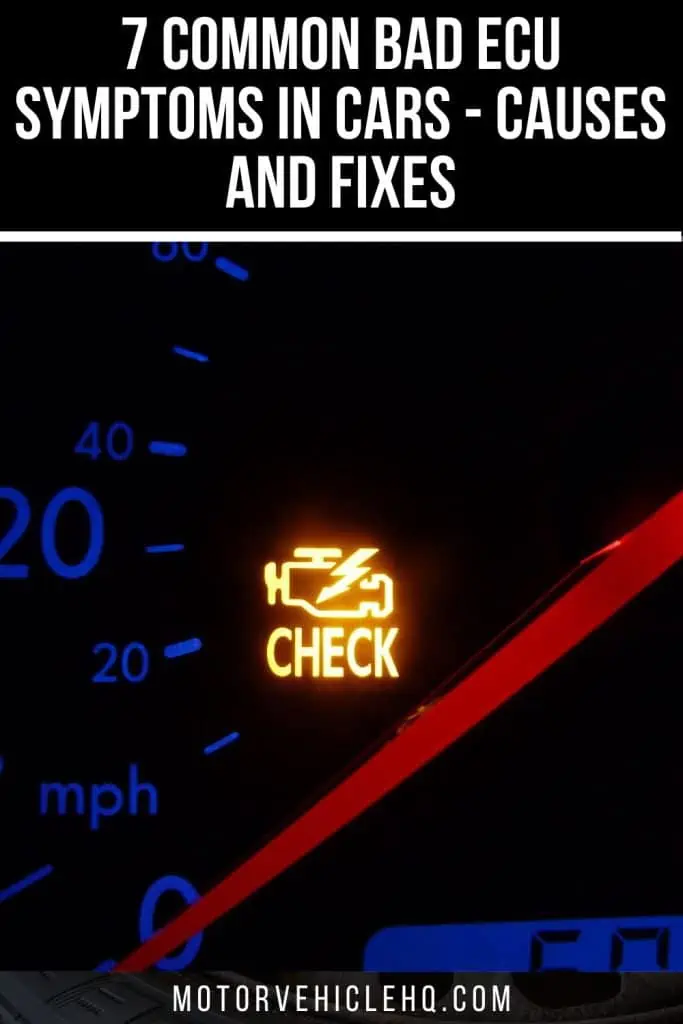
A check engine light or malfunction indicator lamp by Wikiuser100000 / CC BY-SA 3.0

Jim Wicks is the founder of MotorVehicleHQ. With over two decades of experience in the automotive industry and a degree in Automotive Technology, Jim is a certified car expert who has worked in various roles ranging from a mechanic, car dealership manager, to a racing car driver. He has owned more than 20 cars over the past 15 years. Ask him about any vehicle you see on the road and he can tell you the make, model and year. He loves the aesthetics of all things cars, and keeps his vehicles in pristine condition.
In his free time, Jim enjoys getting his hands dirty under the hood of a classic car or taking long drives along the country roads. His favorite car? A 1967 Shelby GT500, a true classic that, according to Jim, “represents the pure essence of American muscle.”
